
Last issue, we discussed the fundamental importance of studying bones when striving to understand anatomy in figure drawing.
We made the distinction between 2D observational anatomy and 3D constructive anatomy. This month I would like to outline a method for studying this construction. The ultimate goal is to gain a comprehensive understanding of these forms to be able to draw them from any angle from memory.
We will explore how to go about performing this study for the skull, but this approach can be applied to every bone individually and in the full context of the skeleton.
As we can see below, the threedimensional drawing is merely the combination of multiple crosssections, projected in perspective and joined by an outline. While this basic idea is fairly straightforward, the complexity of the full form can quickly become overwhelming. Simplifying the problem will be an immense help for us.
Charlie Pickard is a classically trained fine artist and illustrator. Recently awarded the Philip de László Award for excellence, Charlie continues to work, exhibit and teach out of his studio in London. www.charliepickardart.com
1 Start with the orthographic views
While these cross-sections are essentially infinite in every direction around the form, we can take our study quite far by starting simply with just the cross-sections of the X, Y and Z axis. If we take these views out of perspective and view them alone they are called the ‘orthographic’ views of an object. There are six of these for every form.
Denne historien er fra July 2022-utgaven av ImagineFX.
Start din 7-dagers gratis prøveperiode på Magzter GOLD for å få tilgang til tusenvis av utvalgte premiumhistorier og 9000+ magasiner og aviser.
Allerede abonnent ? Logg på
Denne historien er fra July 2022-utgaven av ImagineFX.
Start din 7-dagers gratis prøveperiode på Magzter GOLD for å få tilgang til tusenvis av utvalgte premiumhistorier og 9000+ magasiner og aviser.
Allerede abonnent? Logg på
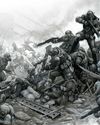
PAINT EPIC BATTLES IN TRADITIONAL INK
Warhammer illustrator THOMAS ELLIOTT shows you how to create an epic science fiction fight scene with this step-by-step guide
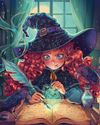
CONJURE MAGIC ILLUSTRATIONS
Daria Anako demonstrates her process for creating a whimsical piece of art with some spellbinding touches
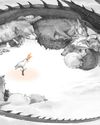
First Impressions
We discover the early influences that inspired the artist
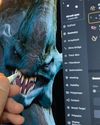
ZBrush for iPad
GAME CHANGER The desktop version of popular 3D sculpting software ZBrush has been redesigned for iPad - and it's brilliant

BenQ GW2786TC
GET AN EYEFUL Don't scrimp out on your health with a monitor that's kind on the eyes and good for creative tasks
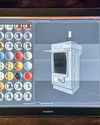
Huion Kamvas Pro 19
TABLET WARS An attractive pen display does an excellent job of balancing price and performance as it sets out to challenge its rivals in the mobile marketplace
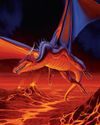
DRAGON OFORCEC
Legendary D&D artist Larry Elmore explains the keys to crafting timeless fantasy art.
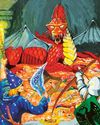
DUNGEON MASTERS
ImagineFX marks the milestone 50th anniversary of the launch of Dungeons & Dragons with a look at its rich tradition of illustration
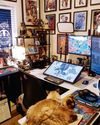
Erik Ly
Gamer's haven Why the artist enjoys a maximalist aesthetic more than the minimalist approach.

2D meets 3D: How the workflows are merging
Interdimensional As VFX and animation evolve and tools become more accessible, Tanya Combrinck asks whether the separation between the mediums is reducing